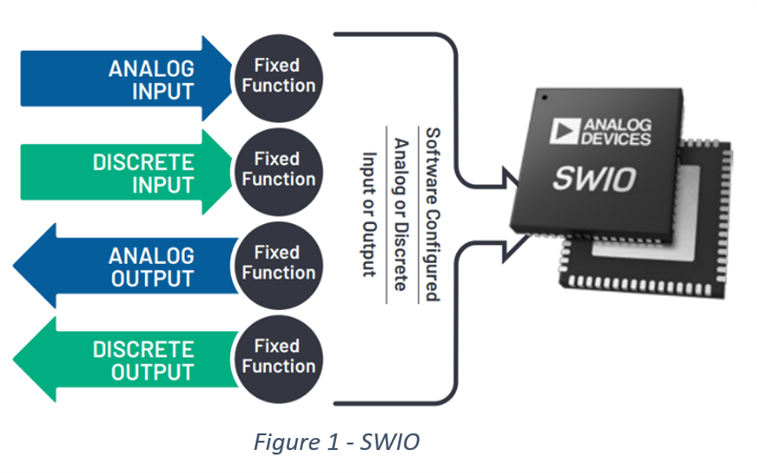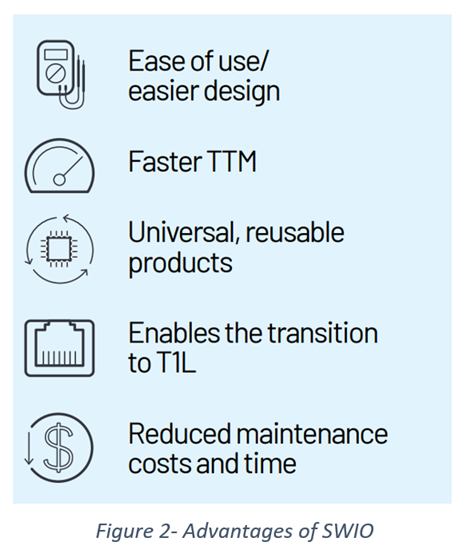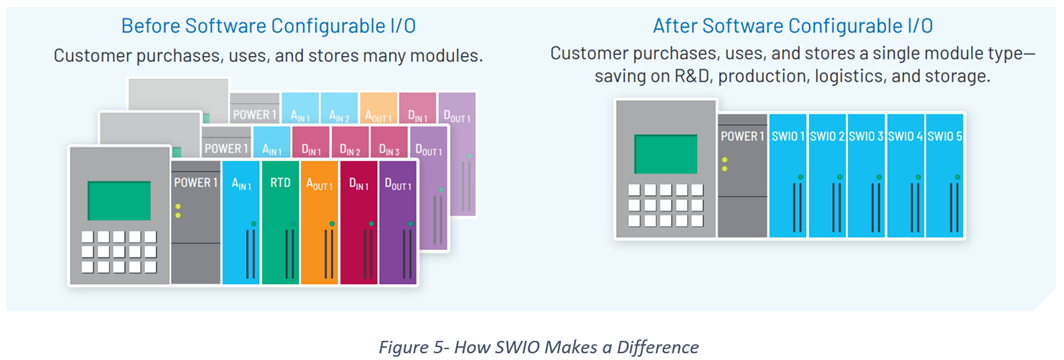By Conal Watterson & Brian Condell
This blog looks at flexible manufacturing within factories. Smart Factories demand flexible automation solutions that can quickly and easily adapt to shifts in consumer behaviors and demand. As a result, rather than fixed, large-scale systems designed for mass-market products and predictable demand, automation vendors must offer systems that can be reconfigured quickly with minimal downtime and capital investment. In this second blog on remote IO, we will focus on software-configurable input/output (SWIO) technology and explain how it fulfills these agility and efficiency needs. The previous blog post talked about remote IO modules.

Why Use SWIO?
Adding flexibility to control systems requires a transition from traditional I/O modules that have fixed function ports (analog in, analog out, digital in, and digital out) to new solutions that end users can configure. With ADI’s SWIO technology implemented in universal I/O modules (including remote I/O), system integrators can more efficiently implement new projects and achieve more flexible automated control, resulting in reduced design and installation costs, as well as reduced commissioning delays.

Software configurable systems are enabling industrial OEMs to deliver unprecedented levels of flexibility to the factory floor while simultaneously reducing their product complexity. New universal I/O capabilities enabled by ADI’s SWIO allow any industrial I/O function to be accessed on any pin, allowing channels to be configured at any time. This means customization can happen right at the time of installation—resulting in faster time to market, fewer design resources, and universal products that can be implemented broadly across projects and customers.

SWIO eases end customers’ transition to smart, edge-connected devices. This enables a managed transition to 10BASE-T1L, Ethernet, and other industrial communications standards by facilitating the continued use of field instruments while transitioning the factory to an Ethernet-connected infrastructure.

- Bridge the Transition to 10BASE-T1L - As industrial ethernet-to-the-edge rolls out, the market needs a solution to allow for the existing sensors and actuators to be re-used with new control and communication products. SWIO-enabled field junction boxes can provide the ideal demarcation point between Single-Pair Ethernet (SPE) and legacy 4 mA to 20 mA/0 V to 5 V standards.
- Reduced Logistics Overhead - Customers can focus on a few flexible designs, achieving economy of scale and streamlining the production flows with minimal set-up and teardown costs, no work-in-progress (WIP) losses, and no production planning issues.
- Reduced Design Time - SWIO enables platform designs that facilitate any combination of inputs and outputs, compared to fixed function systems that require complete redesign if one pin function changes during the planning stage.
- Reduced CapEx - Installation of universal I/O modules is much less time-consuming and error-prone than fixed I/O, and so reduces CapEx. Combined with design/development savings, by using SWIO, it’s possible to reduce CapEx by 20% for only a small increase in hardware costs.

To conclude, when using ADI’s SWIO solutions, manufacturers can develop a platform that replaces multiple aging fixed function I/O modules, or it can be applied across multiple customer applications where the I/O dynamic changes with each installation.
For more information on Analog Devices’ portfolio of SWIO to enable remote IO modules, please visit the links below:
References
- Factory Automation & Process Control | Analog Devices
- Software Configurable I/O Systems for Flexible Manufacturing | Analog Devices
- Software Configurable I/O Products
- Software Configurable Outputs
- Software Configurable Inputs

